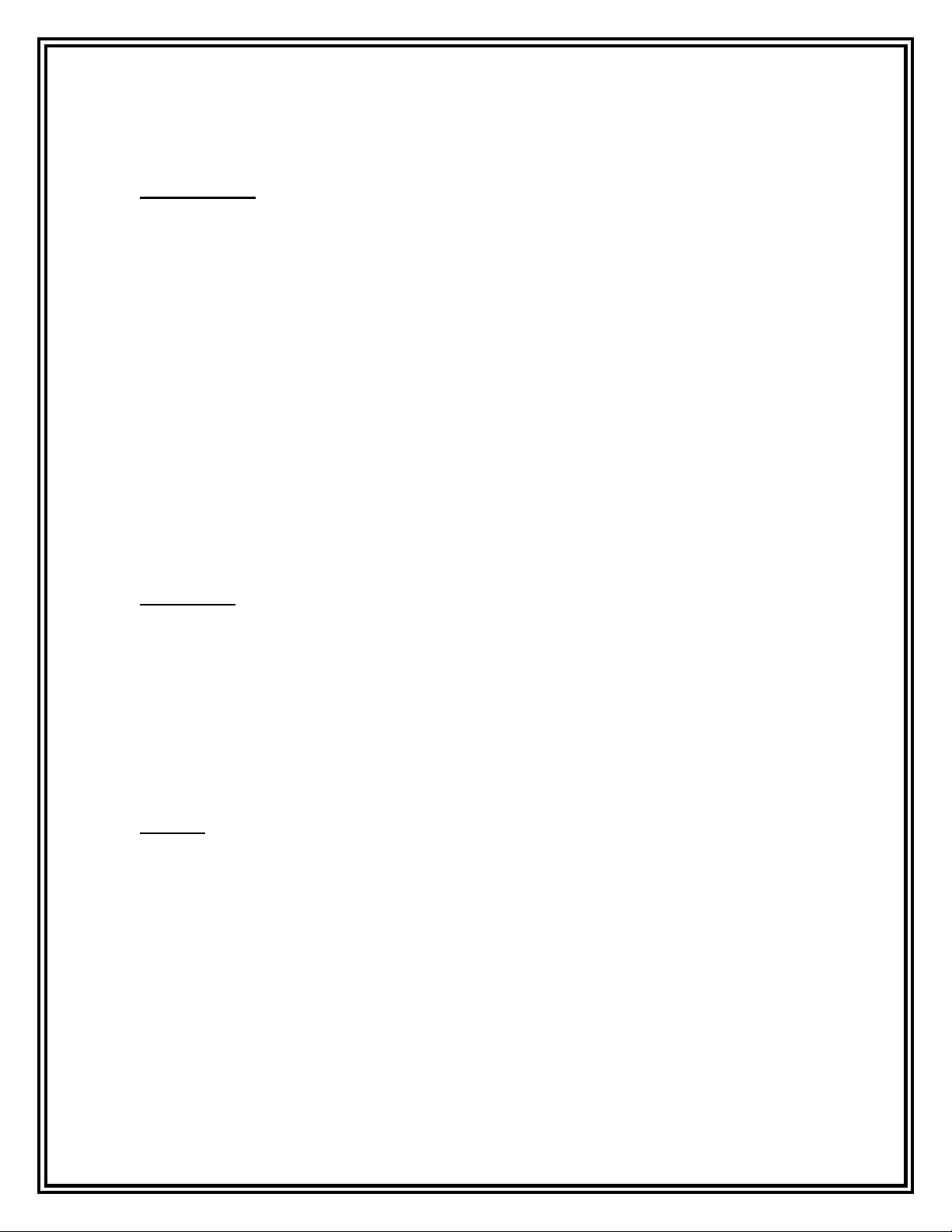
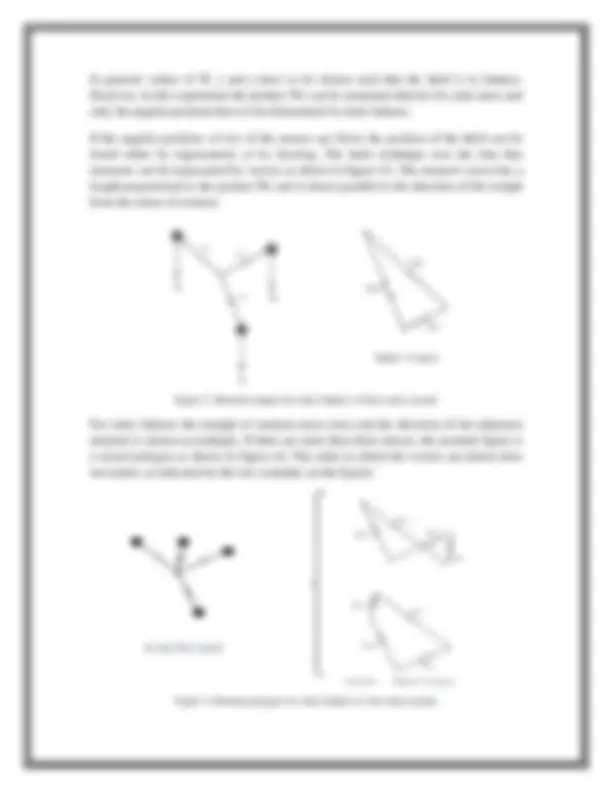
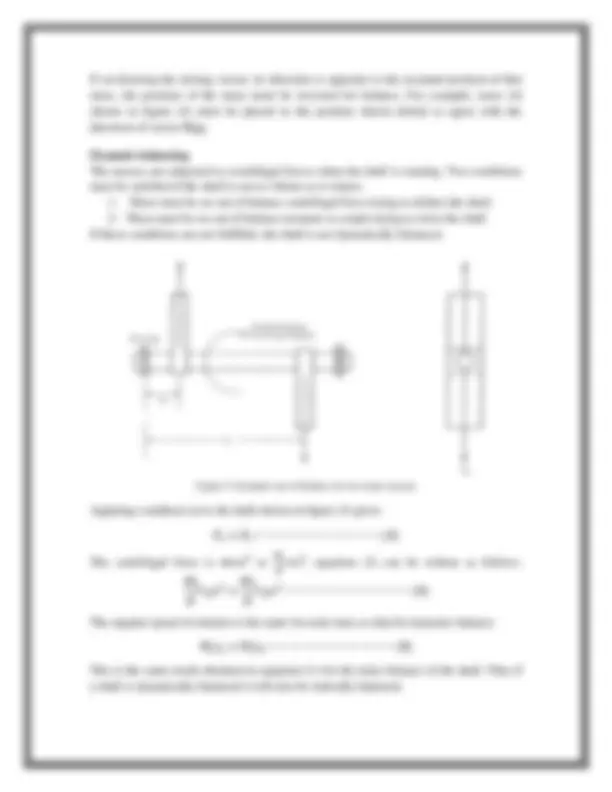
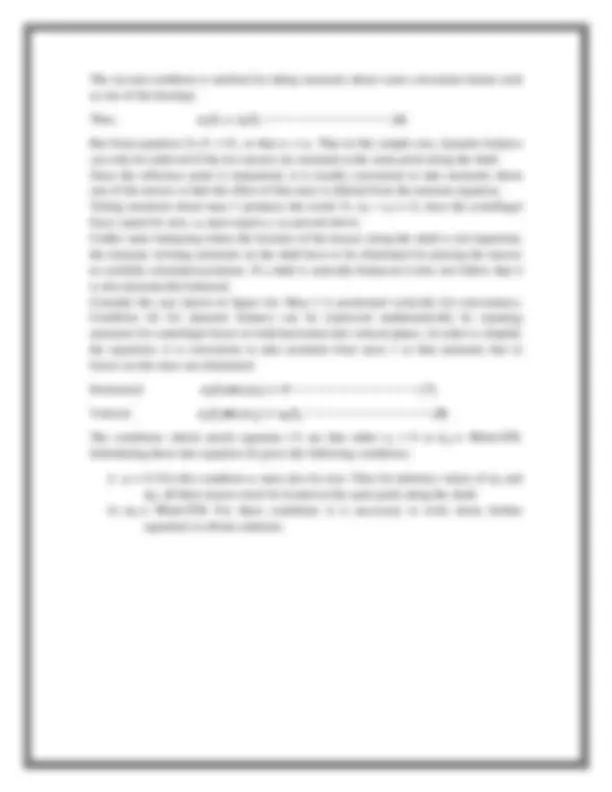
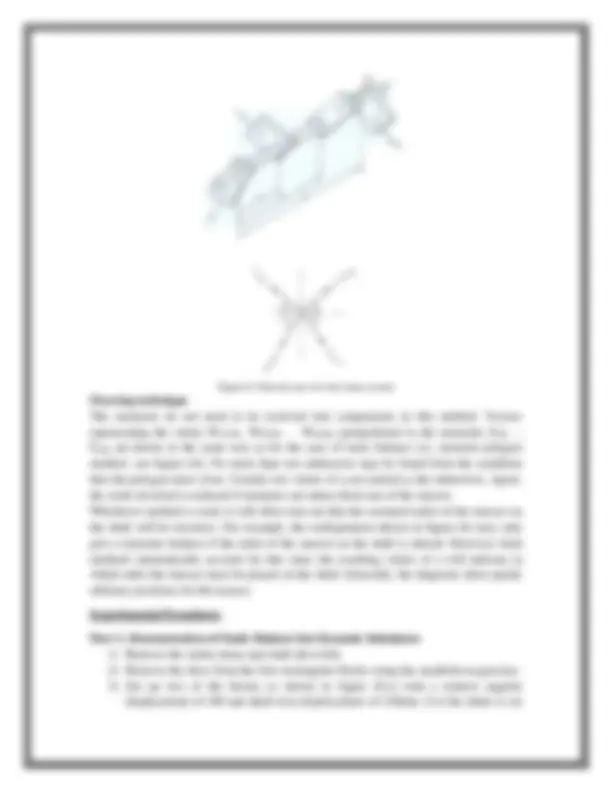
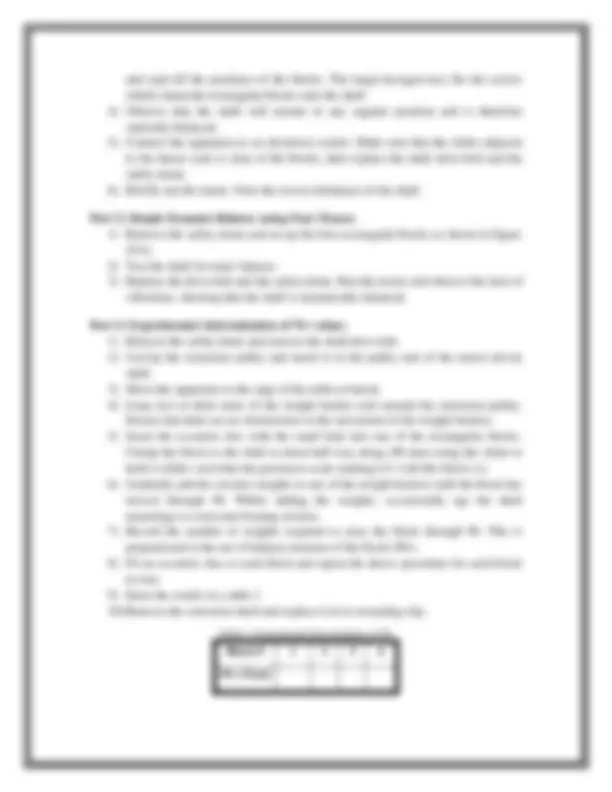
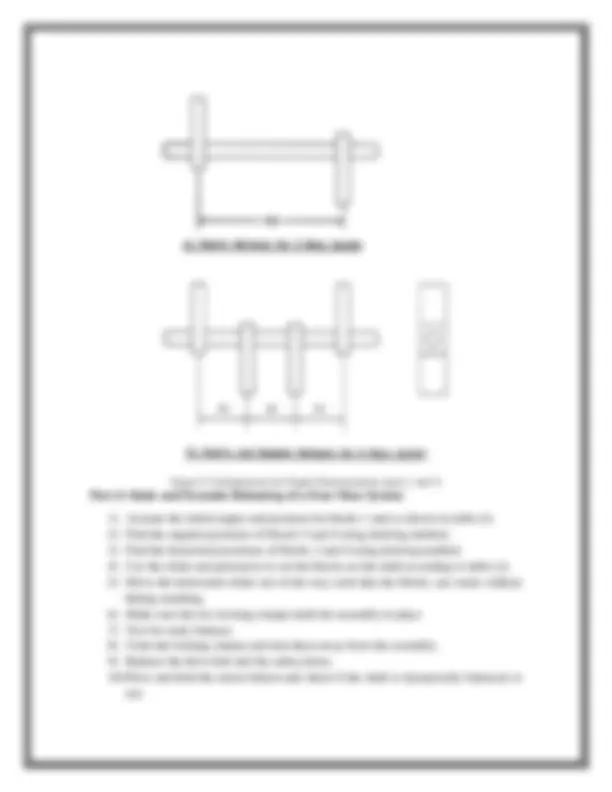


Study with the several resources on Docsity

Earn points by helping other students or get them with a premium plan


Prepare for your exams
Study with the several resources on Docsity

Earn points to download
Earn points by helping other students or get them with a premium plan
Community
Ask the community for help and clear up your study doubts
Discover the best universities in your country according to Docsity users
Free resources
Download our free guides on studying techniques, anxiety management strategies, and thesis advice from Docsity tutors
The principles of static and dynamic balancing of shafts with masses mounted on them. It covers the calculation and graphical techniques to achieve static balance and the conditions for dynamic balance. The document also includes experimental procedures for demonstrating static and dynamic balance using a four-mass system.
What you will learn
Typology: Lecture notes
1 / 11

This page cannot be seen from the preview
Don't miss anything!







Introduction
Many machines use large rotating parts – particularly vehicles. These rotating parts can create a problem. If they are not well balanced, the imbalanced centrifugal forces will create vibrations as the part rotates. This may be acceptable at low rotational velocities but can be harmful or even destructive at high velocities. Even relatively slow-moving vehicle tires need careful balancing or they will cause dangerous vibrations throughout the vehicle suspension and uneven tire wear. High speed rotating parts in jet engines must have perfectly balanced centrifugal forces, or the engine can literally shake itself to pieces resulting in an immediate and catastrophic engine explosion.
In this experiment the student should be familiar with the following concepts: Angular motion. Centrifugal force. Basic vector diagram construction. Basic trigonometry.
Objectives
This experiment aims to: 1- Illustrate the difference between static and dynamic balancing and the advantages of each type. 2- Balance a shaft by calculation or by using a graphical technique, and then to assess the accuracy of the results by setting up and running a motor driven shaft. 3- Show that if a shaft is dynamically balanced it is automatically in static balance, but the reverse is not necessarily true.
Theory
A shaft with masses mounted on it can be both statically and dynamically balanced. If it is statically balanced, it will stay in any angular position without rotating. If it is dynamically balanced, it can be rotated at any speed without vibration. It will be shown that if a shaft is dynamically balanced it is automatically in static balance, but the reverse is not necessarily true.
Static balancing Figure (1) shows a simple situation where two masses are mounted on a shaft. If the shaft is to be statically balanced, the moment due to weight of mass (1) tending to rotate the shaft clockwise must equal that of mass (2) trying to turn the shaft in the opposite direction. Hence for static balance,
The same principle holds if there are more than two masses mounted on the shaft, as shown in figure (2). For static balance,
Figure 1: Simple two mass system
Figure 2: Three mass system
If on drawing the closing vector, its direction is opposite to the assumed position of that mass, the position of the mass must be reversed for balance. For example, mass (4) shown in figure (4) must be placed in the position shown dotted to agree with the direction of vector.
Dynamic balancing The masses are subjected to centrifugal forces when the shaft is rotating. Two conditions must be satisfied if the shaft is not to vibrate as it rotates: 1- There must be no out of balance centrifugal force trying to deflect the shaft. 2- There must be no out of balance moment or couple trying to twist the shaft. If these conditions are not fulfilled, the shaft is not dynamically balanced.
Figure 5: Dynamic out of balance for two mass system
Applying condition (a) to the shaft shown in figure (5) gives:
The centrifugal force is or , equation (3) can be written as follows:
The angular speed of rotation is the same for each mass so that for dynamic balance:
This is the same result obtained in equation (1) for the static balance of the shaft. Thus if a shaft is dynamically balanced it will also be statically balanced.
The second condition is satisfied by taking moments about some convenient datum such as one of the bearings.
Thus,
But from equation (3), F 1 = F 2 , so that a 1 = a 2. Thus in this simple case, dynamic balance can only be achieved if the two masses are mounted at the same point along the shaft. Since the reference point is immaterial, it is usually convenient to take moments about one of the masses so that the effect of that mass is deleted from the moment equation. Taking moments about mass 1 produces the result: F 2 (a 2 – a 1 ) = 0, since the centrifugal force cannot be zero, a 1 must equal a 2 t as proved above. Unlike static balancing where the location of the masses along the shaft is not important, the dynamic twisting moments on the shaft have to be eliminated by placing the masses in carefully calculated positions. If a shaft is statically balanced it does not follow that it is also dynamically balanced. Consider the case shown in figure (6). Mass 3 is positioned vertically for convenience. Condition (b) for dynamic balance can be expressed mathematically by equating moments for centrifugal forces in both horizontal and vertical planes. In order to simplify the equations, it is convenient to take moments bout mass 1 so that moments due to forces on this mass are eliminated.
Horizontal:
Vertical:
The conditions which satisfy equation (7) are that either a 2 = 0 or. Substituting these into equation (8) gives the following conditions:
i) a 2 = 0: For this condition a 3 must also be zero. Thus for arbitrary values of and , all three masses must be located at the same point along the shaft. ii) : For these conditions it is necessary to write down further equations to obtain solutions.
Thus, if the masses are distributed along the shaft, the following conditions must be satisfied for dynamic balance: a) Central mass at 180 to other two masses. b) Masses chosen such that,
c) Masses distributed along the shaft such that,
If there are more than three individual masses, there are no special restrictions which apply to the angular and shaft-wise distributions of the masses and the general conditions for dynamic balance have to be applied to obtain solutions. The angular positions of the masses can be determined by applying conditions for either static balance or for condition (b) for dynamic balance. The distribution of the masses along the shaft is then found by applying condition (a) for dynamic balance. This can be done either by calculation, or by a drawing method similar to that described in static balancing section.
Calculation technique The twisting moments are resolved into components tending to twist the shaft in the horizontal planes. The net moment in each plane must be zero if the shaft is to be dynamically balanced. As previously noted, the equations are simplified considerably by taking moments about the first mass. Referring to figure (8) the appropriate equations for a four mass system are: Horizontal moments about mass 1:
Vertical moments about mass 1:
Note that F 2 , F 3 and F 4 are proportional to W 2 r 2 , W 3 r 3 W 4 r 4. In this experiment, the values of Wr are known for the masses so these values can be used in place of those for F in equations (14) and (15). Given the angular positions of two of the masses, the angular positions of the other two can be found by the methods given in static and dynamic section. If the shaft-wise locations of two of the masses are also known, the locations of the other two can be found by substituting the known values into the simultaneous equations (14) and (15).
Figure 8: General case for four mass system Drawing technique The moments do not need to be resolved into components in this method. Vectors representing the values W 1 r 1 a 1 , W 2 r 2 a 2 … Wnrnan (proportional to the moments F 1 a 1 ... Fnan are drawn in the same way as for the case of static balance (i.e. moment polygon method- see figure (4)). No more than two unknowns may be found from the condition that the polygon must close. Usually two values of a are treated as the unknowns. Again. the work involved is reduced if moments are taken about one of the masses. Whichever method is used; it will often turn out that the assumed order of the masses on the shaft will be incorrect. For example, the configuration shown in figure (8) may only give a dynamic balance if the order of the masses on the shaft is altered. However, both methods automatically account for this since the resulting values of a will indicate in which order the masses must be placed on the shaft. Generally, the diagrams show purely arbitrary positions for the masses.
Experimental Procedures
Part 1: Demonstration of Static Balance but Dynamic Imbalance
Figure 9: Configurations for Simple Demonstrations (parts 1 and 2) Part 4: Static and Dynamic Balancing of a Four Mass System
Table 2: Static and Dynamic Balancing of a Four Mass System Block # 1 2 3 4 Block order θblock [degrees] 0 100 3124 Xblock [mm] 20 120
Discussion and Conclusions
Part 1: Demonstration of Static Balance but Dynamic Imbalance, answer questions 1 and 2: